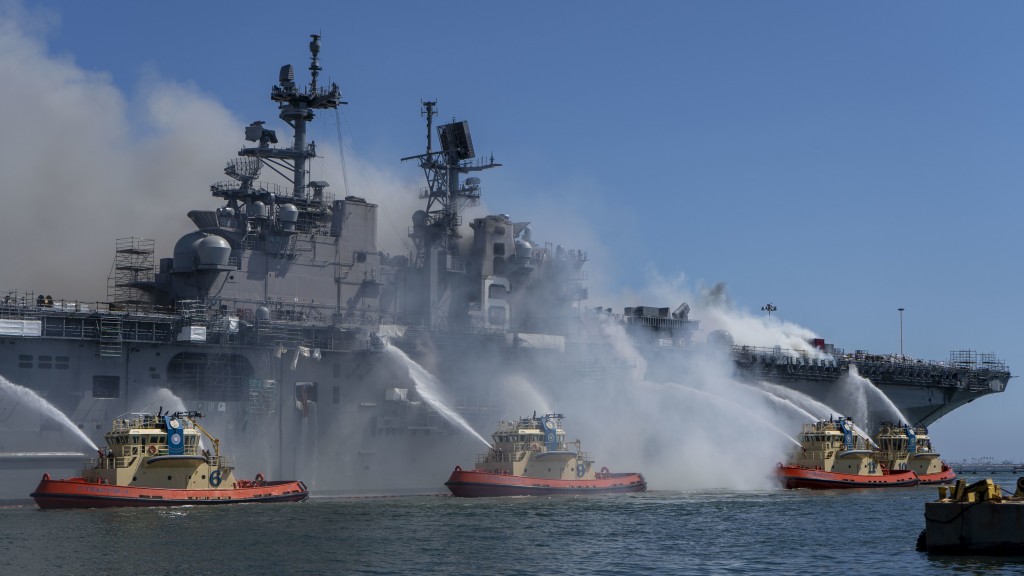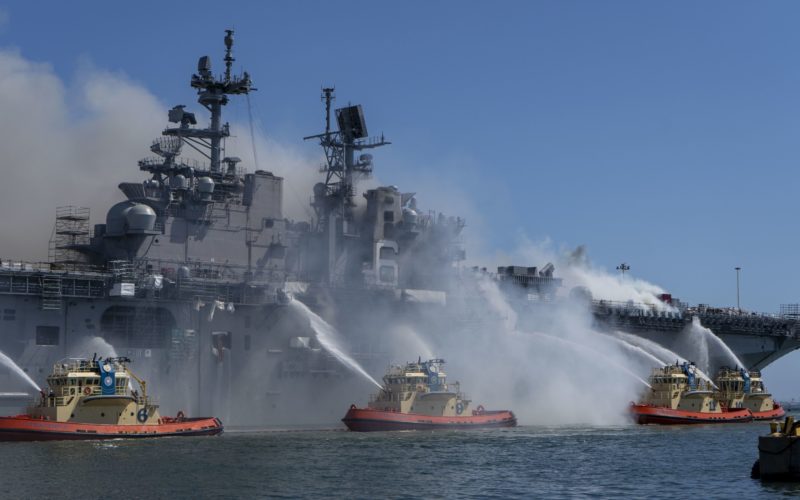(WASHINGTON) — A cascade of failures – from a junior enlisted sailor not recognizing a fire at the end of his duty watch to fundamental problems with how the Navy trains sailors to fight fires in shipyards – were responsible for the five-day blaze that cost the service of USS Bonhomme Richard (LHD 6), according to an investigation into the July 2020 fire reviewed by USNI News.
The investigation, overseen by former 3rd Fleet commander Vice Adm. Scott Conn, found that a two-year, $249 million maintenance period rendered the ship’s crew unprepared to fight the fire, which the service says was set by a crewmember.

“Although the fire was started by an act of arson, the ship was lost due to an inability to extinguish the fire,” Conn wrote in his investigation, which was completed in April and reviewed by USNI News this week. “In the 19 months executing the ship’s maintenance availability, repeated failures allowed for the accumulation of significant risk and an inadequately prepared crew, which led to an ineffective fire response.”
Beyond the ship, Conn concluded that training and oversight failures throughout the fleet – from Naval Sea Systems Command, U.S. Pacific Fleet, Naval Surface Force Pacific Fleet and several other commands – contributed to the loss of the $2 billion warship. Conn singled out 36 individuals, including five admirals, who were responsible for the loss of the ship due to either their actions on July 12 or lack of oversight leading up to the alleged arson.
“The training and readiness of the ship’s crew were deficient. They were unprepared to respond. Integration between the ship and supporting shore-based firefighting organizations was inadequate,” wrote Pacific Fleet commander Adm. Samuel Paparo in his Aug. 3 endorsement of the investigation. “There was an absence of effective oversight that should have identified the accumulated risk, and taken independent action to ensure readiness to fight a fire. Common to the failures evident in each of these broad categories was a lack of familiarity with requirements and procedural noncompliance at all levels of command.”
The revelation of the report comes after the Navy charged Bonhomme Richard sailor Seaman Apprentice Ryan Sawyer Mays with arson in July. Prosecutors say he set the fire on the ship, while his attorney says the Navy has little evidence to tie him to the crime. Mays’ Article 32 preliminary hearing is expected to be held on Nov. 17 in San Diego.
Click here to read the complete USNI report.

